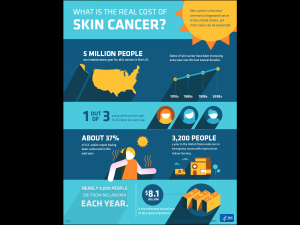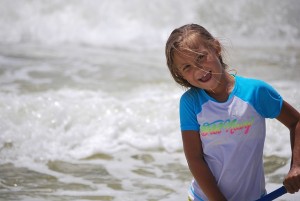I may have been born in the skin I’m in, but I’m still learning how to take care of it. Over the years, I’ve adjusted my habits so I can enjoy the bright warmth of the sun without painful, red skin or worse- possibly developing skin cancer. Experience and some education have taught me a few important lessons. First,
Lessons learned
I learned that I burn…and that it is painful! I’ll never forget that 4th of July I spent reading a book while poolside and ended up looking like a lobster. I can’t help that my skin sensitivity (having a fair complexion) puts me at greater risk, so I’ve learned to take precautions.
I learned to wear a hat. As a kid, I mostly associated skin protection with putting on sunscreen when wearing a swimsuit. As a teen, I learned that wearing a hat would shade my eyes and nose and cover my scalp as well.
I learned to reapply sunscreen. During the long days of band camp, I would put on sunscreen twice a day, because we were out when the sun’s rays were the strongest: 10:00am-3:00pm. When swimming, mom explained to us kids that sunscreen is not waterproof and needed to be reapplied.
I learned not to use a tanning bed. Skin damage is cumulative and permanent. It can lead to wrinkles, age spots or even cancer, and I wanted none of that! As a college student, part of my apartment lease granted me free access to the complex’s tanning bed. About one out of every three non-Hispanic white women aged 16–25 years have tanned in the last year and many do so frequently. I knew, however, that exposure to ultraviolet (UV) radiation was the number one risk factor for developing skin cancer. That was a price I wasn’t willing to pay in the future, even if it meant people would consider me “pale.”
I learned that not all sunscreens are equal. Most sunscreens work by absorbing, reflecting, or scattering sunlight, but they cannot block ultraviolet rays entirely. I learned to look for a higher SPF (sun protection factor) and ones that say “broad spectrum.” A sunscreen labeled SPF 15 means it will take you 15 times as long to get a sunburn as it would if you had no sunscreen on.
I learned how to look for signs of skin cancer. Skin cancer is commonly found on more exposed body parts such as the face, ears, hands and neck. One in five Americans is diagnosed with skin cancer, the most common cancer in the U.S. Despite efforts to increase protective factors, rates have continued to increase.
 I learned what the risks and conditions are for developing certain types of skin cancer. It was no surprise to me that people with fair skin, red or blond hair and blue, gray or green eyes are more likely to burn (and are more susceptible to skin cancer). But I didn’t know that having more than one blistering sunburn as a child is also a risk factor for developing skin cancer. I learned that men are more likely to be diagnosed, and more than 69 percent of melanoma skin cancers occur in individuals 50 and older. These facts encouraged me to remind my dad to look for any changes and to wear sunscreen when out working on the farm.
I learned what the risks and conditions are for developing certain types of skin cancer. It was no surprise to me that people with fair skin, red or blond hair and blue, gray or green eyes are more likely to burn (and are more susceptible to skin cancer). But I didn’t know that having more than one blistering sunburn as a child is also a risk factor for developing skin cancer. I learned that men are more likely to be diagnosed, and more than 69 percent of melanoma skin cancers occur in individuals 50 and older. These facts encouraged me to remind my dad to look for any changes and to wear sunscreen when out working on the farm.
I have learned that I do a pretty good job of protecting my skin, but I can always do better.


